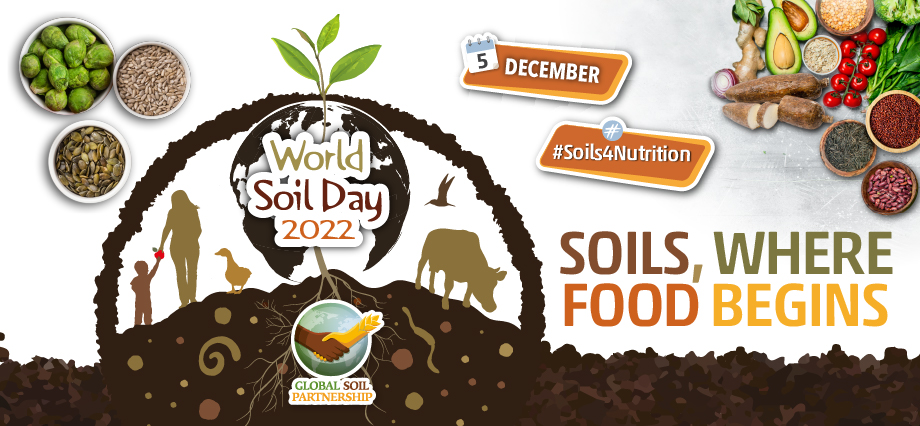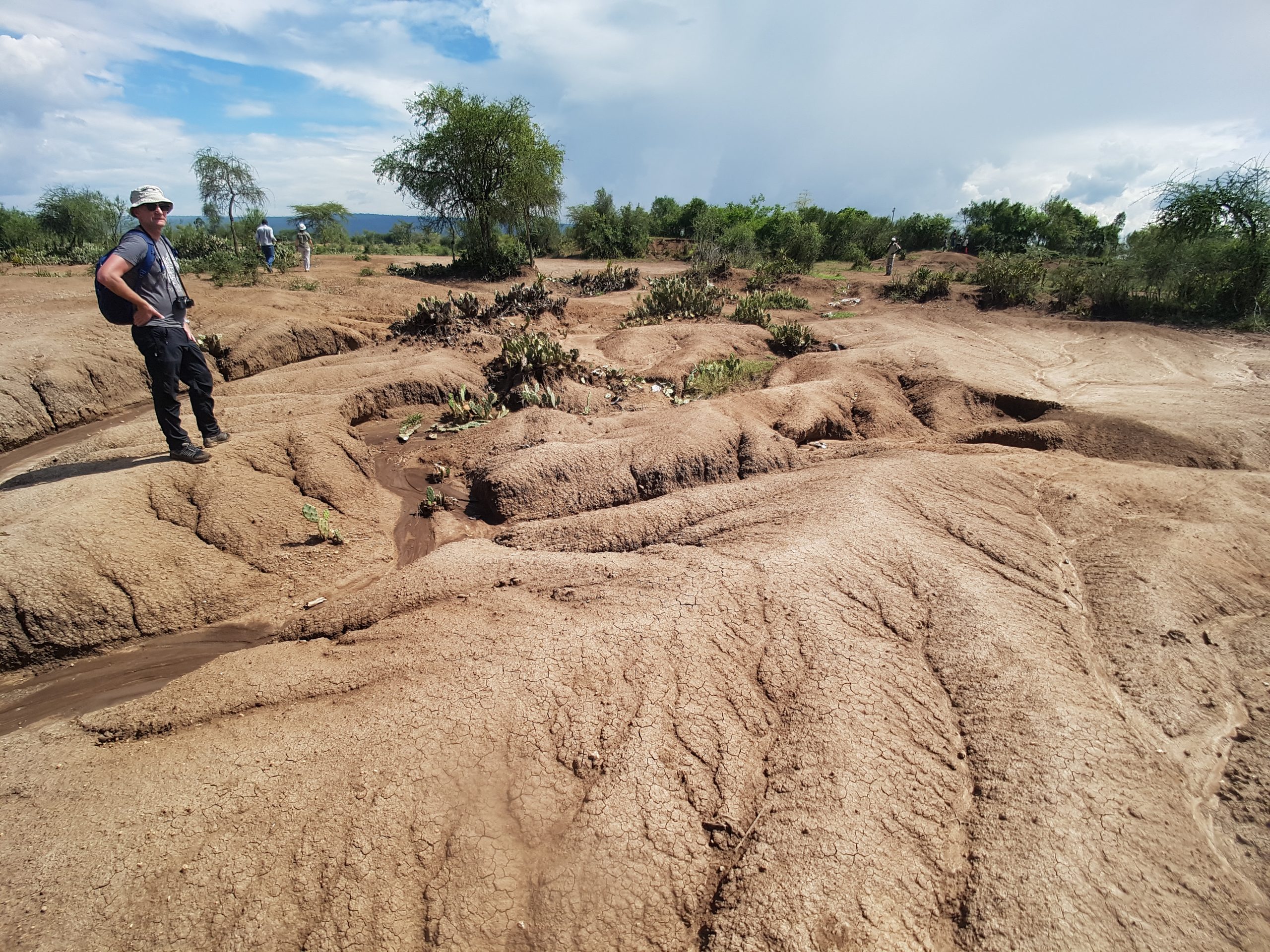
To celebrate World Soil Day on the 5th of December we have written a series of blogs that dig in (pun intended) to the many connections between soils and food. These blogs are inspired by our sustainable soils research at Lancaster and include a recipe that connects our soil research to the dinner plate! We are publishing a blog a day between 21st November and the 5th of December. We hope you enjoy digging into both our research stories and recommended recipes. Enjoy – bon appetit!
No Soil = No Food
John Quinton, Professor of Soil Science, Lancaster Environment Centre
j.quinton@lancaster.ac.uk Twitter: @John_Quinton

Credit: John Quinton
Soil is a 5 trillion dollar food factory [1]. It underpins the production of approximately 93% of all protein [2] and almost all of the carbohydrate consumed directly or indirectly by humans. There is no comparable medium that will store water and cycle nutrients for plants at the scales of food production that the world requires. In contrast, hydroponic systems require vast amounts of energy, water and manufactured materials, to accomplish the same task, and while they may be suitable for the production of high value crops they are unsuited to the production of staple foodstuffs.
However, like any factory, soils do need to be carefully managed if they are to perform. This means protecting soils from erosion, maintaining organic matter, replenishing nutrients, avoiding compaction, and not salinizing or contaminating them. Sealing soils with concreate, tarmac, brick and mortar is another way to destroy the potential of soils to produce food.Much of my research focusses on soil erosion, its impact on soils and water and ways in which it might be controlled. Soil erosion occurs due to water, wind, tillage and the harvesting of root crops. Water, wind and tillage transport soil from one location to another. This often leads to the thinning of soils in part of the landscape, particularly hillslopes, and the thickening of soils in others, such as valley bottoms. Where the soil is thinner the soils are able to store less water and contain fewer nutrients. This means that a thinner soil is less able to provide water to plants during times of drought than a thicker soil, and without that water the plants cannot extract the nutrients they need to grow. Clearly, where soils have thickened they can store more water which helps during dry conditions. Our research has shown that these thicker soils only partially compensate for yield losses on thinner soils during droughts and overall loss in yield may be up to 10% [3].
There are however simple steps that can be taken to protect our soils from erosion with the key ones being to maintain a vegetation cover, alive or dead, on the soil for as much of the year as possible. Not only does vegetation protect the soils from water and wind it contributes valuable organic matter and promotes biological activity which helps to stick soil particles together. In addition, moving from plough based agriculture to minimum or zero tillage will slow down or stop the translocation of soil. And finally, reducing the size of fields and the slope steepness can also help reduce both the volumes and energy of water, but also the velocity of wind.
However, there are times when soils leave the field and end up in rivers and lakes. In some cases this can lead to problems associated with sedimentation and eutrophication and cause significant economic impacts. For example, in the Mississippi most sediment entering the river system is associated with arable catchments [4]. The amount of sediment deposited means that almost continuous dredging is required to keep the river navigable. The Mississippi River Ship Channel project, which focusses on the lower 725 km of the river, started in 2020 and will cost $270 million to dredge 15 million cubic meters each year for the next 20 years [5]. Of course that cost does not include all that valuable soil that has been lost: the need for increased fertilization, more supplemental irrigation and the associated costs with remediating and restoring degraded land.
Therefore my recipe is dedicated to the soils of the Mississippi basin, many parts of which have found their way, through no fault of their own, into the Mississippi river and become known as mud rather than soil.
[1] van Nieuwkoop, M. 2019. Do the costs of the global food system outweigh its monetary value? World Bank, Washington
[2] FAO. 2022. The State of World Fisheries and Aquaculture 2022. Towards Blue Transformation. Rome, FAO. https://doi.org/10.4060/cc0461en
[3] Quinton, J.N., Öttl, L.K. and Fiener, P., 2022. Tillage exacerbates the vulnerability of cereal crops to drought. Nature Food, 3(6), pp.472-479.
[4] Hassan, M. A., Roberge, L., Church, M., More, M., Donner, S. D., Leach, J., and Ali, K. F. (2017), What are the contemporary sources of sediment in the Mississippi River?, Geophys. Res. Lett., 44, 8919– 8924, doi:10.1002/2017GL074046.
[5] Mississippi River Ship Channel Gulf to Baton Rouge, LA Integrated General Reevaluation Report And Supplemental Environmental Impact Statement. Appendix K: Preliminary Assessment of the Dredge Material Management Plan.
Recipe: Mississippi Soil (Mud) Pie
I used this recipe, reproduced from BBC Good Food magazine (December 2014) by Katy Greenwood. If you like sweet indulgent deserts then this is for you. It’s multi-layered, just like the soil – I hope you enjoy it as much as our team and I did!
 Ingredients
Ingredients
2 x 154g packs creme-filled chocolate biscuits, centres scraped out
100g butter, melted
For the brownie layer
100g butter
140g dark chocolate, chopped, plus extra for grating
2 medium eggs
140g dark soft brown sugar
25g plain flour
For the chocolate custard layer
500g pot ready-made vanilla custard
50g dark chocolate
½ tsp vanilla extract
3 gelatine sheets
For the topping
300ml double cream
Method
STEP 1: Heat oven to 180C/160C fan/gas 4. In a food processor, whizz the biscuits to a fine crumb. Pour in the melted butter and pulse briefly to mix well. Spoon into a 24cm pie dish and press into the base and up the sides. Bake in the oven for 10 mins to firm up.
STEP 2: To make the brownie layer, melt the butter and chocolate together in a bowl set over a pan of simmering water (making sure that the bottom doesn’t touch the water), or in short bursts in the microwave.
STEP 3: In a separate bowl, whisk the eggs until pale, fluffy and doubled in size, then add the sugar and whisk until thickened. Fold in the chocolate mixture, then sieve in the flour and fold in.
STEP 4: Pour into the baked biscuit case and return to the oven for 15–20 mins until the brownie has a crust on top. Set aside and leave to cool (if the brownie has risen a lot, it should sink down slightly as it cools).
STEP 5: Once the brownie base is cooled, put the custard, chocolate and vanilla in a pan and cook over a medium heat, stirring, until the chocolate has melted into the custard. Remove from the heat.
STEP 6: Soak the gelatine in a little cold water and, once softened, remove from the water and squeeze to remove any excess. Stir into the warm custard mixture until dissolved. Let the custard cool slightly, then pour over the brownie layer. Put in the fridge for a few hrs, or overnight, until set.
STEP 7: Remove the mud pie from the fridge about 30 mins before serving so that it can come to room temperature for easy slicing. Just before serving, whip the cream to soft peaks and spoon it over the custard layer, then grate over some dark chocolate.